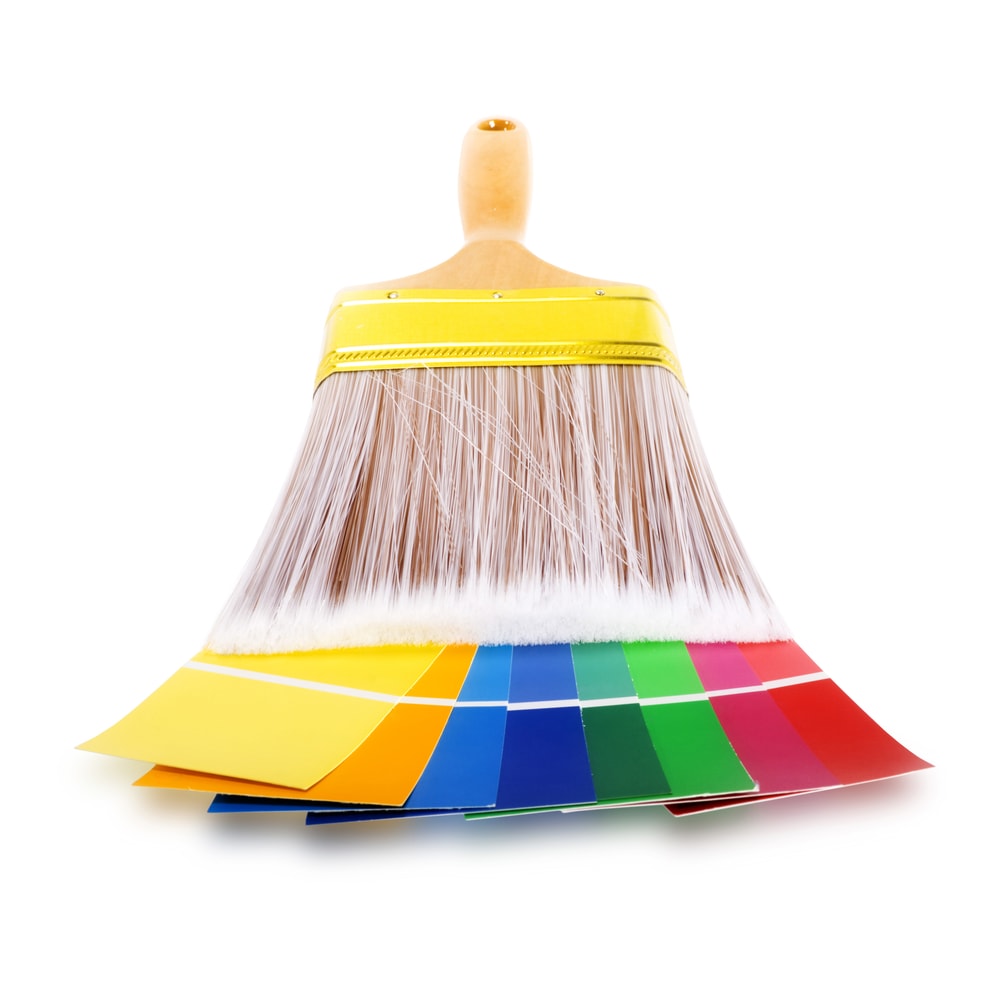Color is not your only choice when selecting paint. The finish is just as important to the final appearance of the paint job.
Most paint manufacturers offer four to five finishes to choose from. These finishes range from a matte finish to a high-gloss finish. There are benefits to each option, depending on which room you intend to paint.
When painting the bathroom, you may want a finish that is easier to clean and resistant to mold and mildew. Here is a simple guide to help you select the best finish for the paint in your bathroom.
Understanding the Pigment Volume Concentration
The shine of the finish is determined by the ratio of pigment to binder material. This ratio is referred to as the pigment volume concentration (PVC).
When the paint has a lower PVC value, it contains less pigment by volume compared to the volume of binder material. A lower ratio also increases the reflectivity of the dried paint, creating the shiny appearance found with glossy finishes.
As a higher PVC value means that the paint contains a higher concentration of pigment, the dried paint often appears more vibrant or allows more of the color to show through. However, these flatter finishes are also often less durable as they contain less binder material.
The basic difference is that a flatter paint may appear brighter and flat while also forming less of a bond with the surface that you are painting. The glossier finishes appear shiny and create a tougher bond, making them more durable and easier to clean.
These differences are why flatter finishes are often used for walls and ceilings while glossy finishes are often used on baseboards and trim.
Matte and Eggshell Finishes
A matte, or flat, finish contains the most pigment compared to other finishes with a PVC of 40% or more. The eggshell finish is one of the most popular interior finishes and contains 35% to 40% PVC. These two options provide a flatter look for your walls and ceiling.
Satin and Semi-Gloss Finishes
Satin finishes have a 30% to 35% PVC while semi-gloss finishes typically have a 25% PVC. The satin finish can be very close to eggshell, depending on the manufacturer. The semi-gloss contains about half as much pigment concentration as the flat finishes.
Gloss or High-Gloss Finishes
The gloss finish contains the lowest PVC ratio. Some manufacturers also call this finish high-gloss. Most of these finishes have a PVC of 15%, creating the glossiest finish available.
Which Finish Should You Choose?
Matte and eggshell finishes are still suitable for use in your bathrooms. Keep in mind that they may require more frequent cleaning and are more susceptible to damage, including water damage or mold growth.
The gloss finish offers the most shine and durability. Some homeowners may find that this finish has too much shine for the walls and ceilings in their bathrooms. However, a gloss finish may be perfect for the trim.
Satin and semi-gloss finishes are right in the middle. If you prefer a little more shine, consider using semi-gloss for your bathroom walls and ceiling. For those who want something a little flatter, you may want to look at the satin finishes. Both options are more durable than eggshell or matte and provide a subtle shine compared to the high-gloss finishes.

Ray is an inspiring leader with a strong work ethic stemming from his exemplary upbringing in a caring and loving family environment. His parents modeled the importance of integrity and hard work to him and his siblings, values which Ray now instills in his teenage daughter. As the owner of Aspen Painting & Wallcovering, Inc., he leads by example by expecting nothing but the best from himself and his employees. His primary goal is to provide superior service and quality craftsmanship to each of his clients so that they become enthusiastic ambassadors for the company. Ray is a passionate team player who always strives to exceed expectations.

